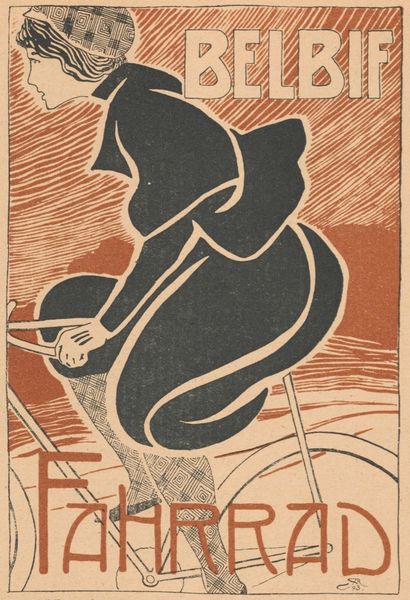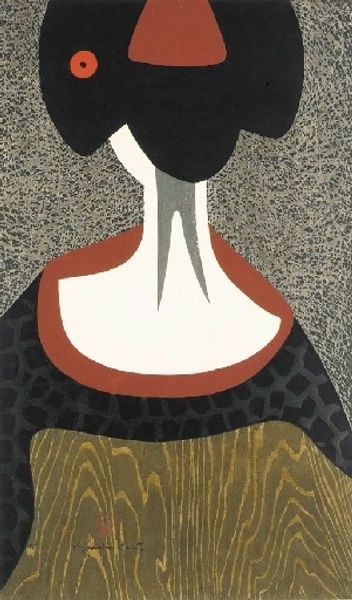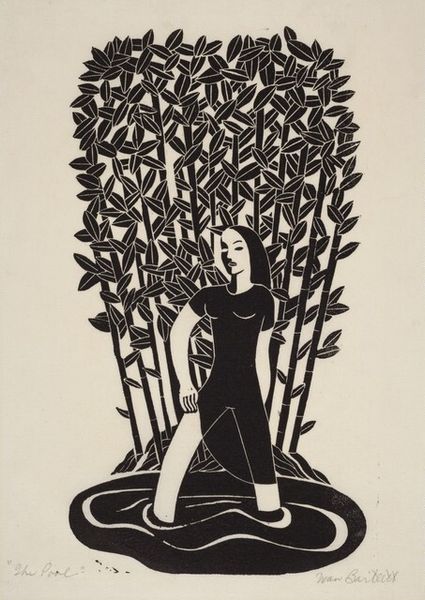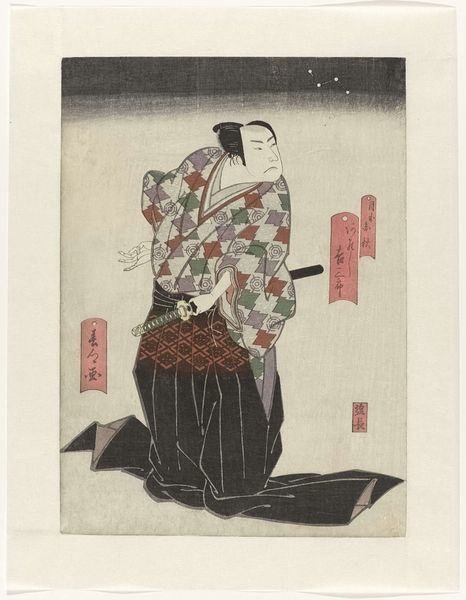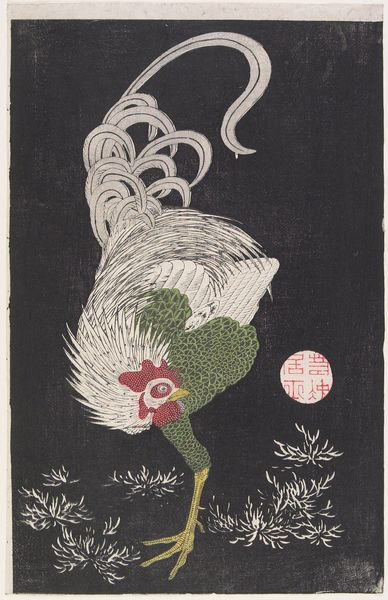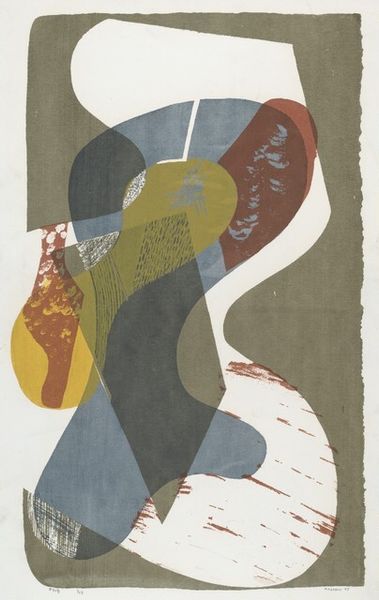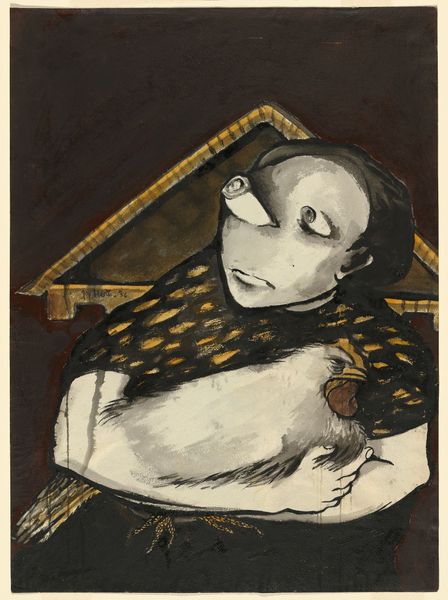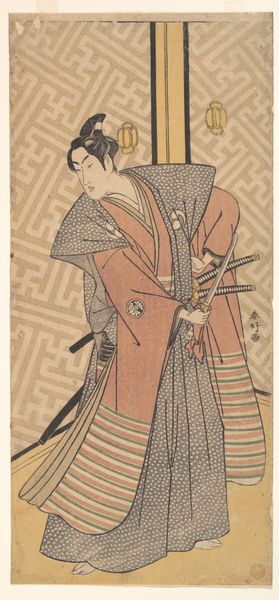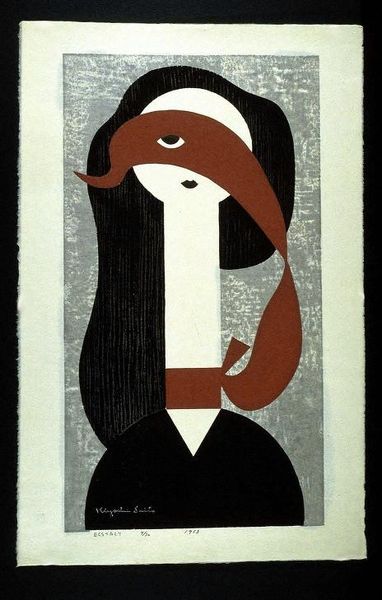
Copyright: Kiyoshi Saito,Fair Use
Curator: Ah, Kiyoshi Saito's "Maiko III" from 1960, a beautiful woodcut print. It has a stillness to it, don't you think? Almost like a photograph capturing a fleeting, private moment. Editor: Absolutely. There's a sense of melancholy. The cool grays and blacks mute the vibrant life often associated with geishas. The texture, it gives the whole composition a raw, earthy quality. Is that deliberate subversion of expectation something Saito was known for? Curator: Saito certainly embraced simplification. He really pulled elements from the traditional Ukiyo-e style but gave them a very modern spin. The texture, the abstraction, those were really central to his artistic fingerprint. The focus seems to be on the abstract beauty, on formal geometry almost. Editor: The starkness also highlights a critical gaze on performativity. The woman's identity is almost erased, her face obscured. What is it saying about the commodification and exoticism that maiko historically faced—particularly during periods when they were constructed to fulfill very specific fantasies for foreign audiences? Curator: That's an insightful reading! He’s abstracting her form, maybe subtly commenting on objectification. You know, he worked quite a bit with landscapes as well. It feels like his eye for reduction and quiet, profound space is just transplanted here onto a figurative subject. Editor: The simplification is so powerful; reducing a human form to shapes really concentrates the symbolic weight, right? It feels like Saito asks the viewer to question their preconceptions about femininity, identity, and culture itself. Curator: Precisely. It’s the perfect combination of graphic boldness and serene contemplation, wouldn't you say? He takes this traditional subject, reduces it to essential forms, and then breathes into it a totally modern soul. It's like a visual koan. Editor: Right, the space is activated; it stops being passive! Thank you. Considering Saito through that lens… well, the artwork opens up even further. It is about reducing visual clutter, but more importantly about clarifying perception itself. Curator: Yes, sometimes less is more, isn't it? It’s about revealing, distilling, capturing a certain spirit. Editor: Agreed.
Comments
No comments
Be the first to comment and join the conversation on the ultimate creative platform.
